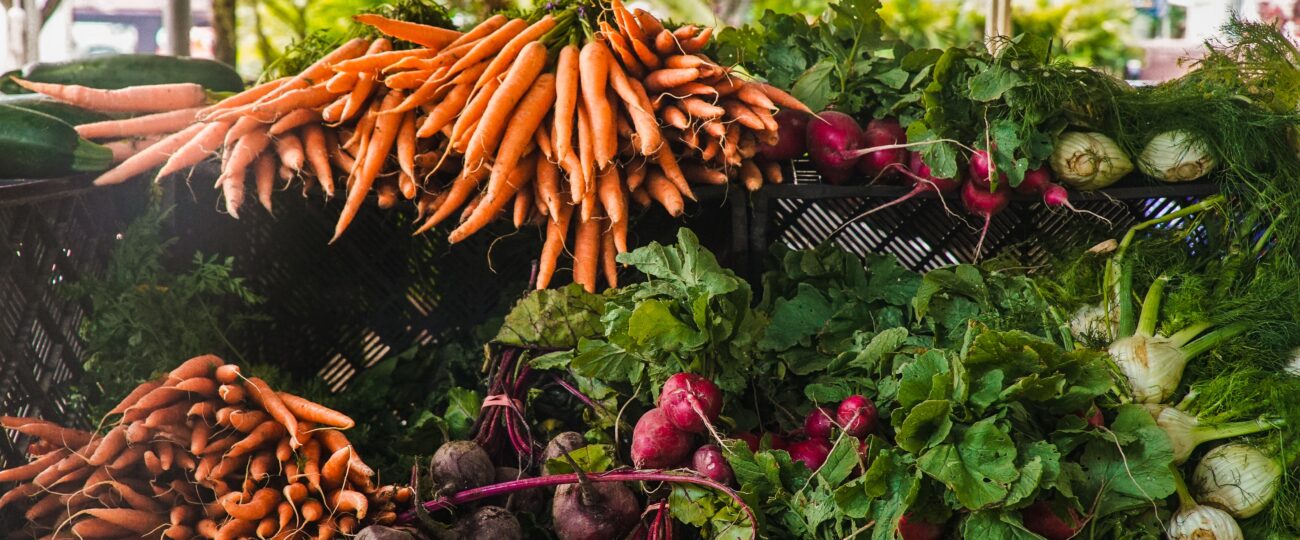I hear people talk all the time about how difficult it is to acquire all the nutrients that we need from food each day.
Eating healthy has become increasingly challenging over the past several decades. The introduction of processed foods in the 1950s has done more damage than good to America’s health. The invention of frozen dinners, boxed snacks and fast food have inconspicuously worked their way into the Western food system and consequently American grocery stores, homes and plates all under the guise of “fun” and “convenience.”
Fast, processed and convenient foods have been stripped of many natural nutrients and are often loaded with additives and preservatives such as salt, sugar, saturated fat and artificial colors and flavorings. The fact that these foods are so easy to grab and taste delicious makes convenience foods an easy solution when we feel a wave of hunger.
Even in their natural form, fruits and vegetables offer a wide variety of colors and flavors. From the vibrant orange of a pumpkin to the sweetness of a watermelon, plants exert their appeal. The question remains, how do we get more nutrients from plants onto our plates and ultimately into our bodies?
Before the introduction of processed foods, people had to grow and prepare their food or buy it from someone who did. Food and labor were words that were probably thought of simultaneously before the 1950s. Nowadays, food is thought of more as something to be consumed.
Given the ease at which we can wander into our kitchens and select a snack or stop by a local fast-food restaurant for a quick meal, convenience has morphed the way we approach eating. Food and labor are now only linked by the dollar amount on our grocery bills. If we aim to eat less processed and more whole foods, we must strive for a balance between convenience and healthful foods.
Convenient and healthful foods include wholesome snacks like baby carrots and hummus, sliced apple and peanut butter, or roasted chickpeas. One of the best ways to ensure that whole foods are the first thing you reach for during your next refrigerator raid is to prepare your produce. Place sliced strawberries or sweet bell peppers in clear glass containers at the forefront of your refrigerator for an easy-to-reach snack.
Canned and frozen fruits and vegetables are great options for college students looking for even more convenience. Each plant is made up of a different variety and number of vitamins, minerals, antioxidants, and fiber which provide an array of health benefits from reducing cancer risk to improving sleep. The more color you include on your plate, the more nutrients you will consume.
Grab a banana or orange with breakfast, add romaine lettuce and tomato to your sandwich at lunch, or steam up some broccoli as an easy side for dinner. Get in the habit of adding different colored fruits, vegetables and other healthful foods such as beans to your regular meals to boost your nutrient intake.
The typical American diet revolves around lots of meat. Protein is a celebrated macronutrient in Western society, which is why animal products are a major part of many diets. While there is nothing inherently wrong with eating animal products; in fact, because they provide you with essential nutrients such as vitamin B12, they tend to be higher in saturated fat which is not as good for heart health.
If you would normally sit down for a large steak and a serving of mashed potatoes, you could try switching to a smaller steak with an added side of sautéed vegetables. Small choices are what define our health. Making vegetables the star of our meals instead of meats takes us one step closer to achieving optimal health.
Even simple changes to your eating habits and food choices can prolong your health. It’s easy to get discouraged about your health goals when faced with the temptations of cravings, convenience stores and social gatherings, but don’t give up! Keep making healthy choices.
You will be amazed at how a few simple changes can add up to large health benefits over time. And lastly, leave room for improvement. There is no “perfect” way to eat.
Eat foods you enjoy even if they aren’t what you would consider healthy. Non-nutritious “fun” foods can still be a part of a healthy diet when you balance them out with nutritious foods. Just like a marathon runner isn’t born in a day but rather is strengthened through months of training, we shouldn’t expect our health to go from zero to 60 in the blink of an eye.
Start where you are and keep going. Progress—no matter how small—is something to be celebrated. With the promise of warmer weather in springtime, the Winthrop Garden is beginning to flourish with food. Stop by Scholar’s Walk every Wednesday at noon to pick up free produce from the Human Nutrition farmers market cart!




